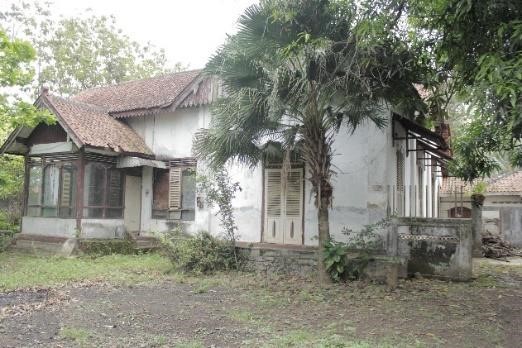The hierarchy of buildings in the Kaliredjo sugar factory employees' settlement, Sumpiuh, Banyumas (1909-1933) Hierarki bangunan permukiman pegawai pabrik gula Kaliredjo Sumpiuh Banyumas (1909-1933)
Main Article Content
Abstract
During the 19th century, industrialization in Indonesia resulted in the presence of many archaeological artefacts, including a sugar factory. Research on Kaliredjo sugar factory has never been conducted. This research aims to find out the social structure through the settlement pattern of Kaliredjo sugar factory. The method used in this research is an archaeological method in the form of data collection, processing, and interpretation. : Both primary and secondary data were gathered as they relevant to the issues addressed in this research. The data is processed by juxtaposing primary and secondary data. The processed data is analyzed using the lens of panopticon theory in order to address research inquiries. The findings of this study indicate the existence of a social framework and significance in the arrangement of residential buildings for employees of the Kaliredjo sugar Factory.
Article Details

This work is licensed under a Creative Commons Attribution-NonCommercial-ShareAlike 4.0 International License.
References
Breman, J. (1980). “The informal sector” in research: theory and practise (2 ed.). CASP, Erasmus University Rotterdam.
Cribb, R. (2012). Kamus sejarah Indonesia. Komunitas Bambu.
Foucault, M. (2008). “Panopticism” discipline and punish the birth of prison. Race/Ethnicity: Multidiciplinary Global Contexts, 2(1), 1–12.
Ginaris, L. S. (2018). Permukiman emplasemen pabrik gula Purworejo (1910-1933). Berkala Arkeologi, 38(2), 154–171. https://doi.org/10.30883/jba.v38i2.282
Grant, J. S. (2005). The archaeology coursebook: an introducing to skill, topic, method. American Geographical.
Hoeve, W. Van. (1991). Kamus Belanda-Indonesia. Ichtiar Baru Van Hoeve.
Inagurasi, L. H. (2010). Pabrik gula Cepiring di Kendal, Jawa Tengah tahun 1835-1930, sebuah studi arkeologi industri. UI.
Kuncorojati, C. (2013). Pabrik gula Sindanglaut, Cirebon, Jawa barat tahun 1835-1930, sebagai kajian arkeologi industri. UI.
Leirissa, R. Z., Ohorella, G. A., & Tangkilisan, Y. B. (1996). Sejarah ekonomi Indonesia. Proyek Inventarisasi dan Dokumentasi Sejarah Nasional.
Moll, J. F. A. C. van, & Lugten, C. H. (1916). Projecten van wooningen voor suikerondernemingen. de Bussy.
Nugraha, M. S. (2018). Pabrik gula Kalibagor, Banyumas akhir abad ke-19: suatu kajian arkeologi industri. UI.
Nurwanti, Y. H., Harnoko, D., & Larasati, T. A. (2015). Sejarah perkembangan ekonomi dan kebudayaan di Banyumas masa Gandasubrata tahun 1913-1942. BPNB.
Palmer, M., & Neaverson, P. (1998). Industrial archaeology, principles and practice. Routledge.
Poesponegoro, M. D., Notosusanto, N., & Basri, Y. (2008). Sejarah nasional Indonesia V (Edisi Pemu). Balai Pustaka.
Sharer, R., & Ashmore, W. (2003). Archaeology discovering our past. The McGraw Hill Companies, Inc.
Soekiman, D. (2011). Kebudayaan Indis dari Zaman Kompeni sampai Revolusi. Komunitas Bambu.
Watson, T. . (1995). Sociology work and industry. Routledge.

